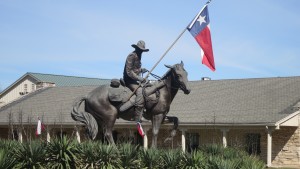KN, p. 168 “How do you become a US Marshal?”
In the last post, “What does a U.S. Marshal do?” I listed quite a few of the duties that occupy the days of U.S. Marshals working in the various sections of the U.S. Marshal Service.
Part 2 of the series deals with qualifications needed to become a member of the oldest federal law enforcement agency in the United States.
First and foremost, potential candidates must be U.S. citizens and must be between the ages of 21 and 36. There are exceptions to the upper limit, but they are addressed at the time of application.
Before attending academy training, candidates must:
- Have a bachelor’s degree, plus a year of grad school, preferably in an area of criminal justice – with at least a B average in all coursework.
- Pass a background check – assume that it will be thorough
- Complete interviews and various screenings – assume they will be intense
- Be in top physical shape – not just a gym rat
- Have at least normal vision and hearing
- Pass the Fitness Test – see below and decide whether you could qualify to be part of the next Academy class
Minimum Fitness Standards for Men (30-39) in order to pass:
Complete 27 pushups, followed by 36 sit-ups, immediately followed by a 1.5 mile run in less than 13 minutes.
The Superior level is pegged at 51 pushups, 50 sit-ups and that same 1.5 mile completed in less than 9 minutes.
Minimum Fitness Standards for Women (30-39) in order to pass:
Complete 14 pushups, followed by 27 sit-ups, with the 1.5 miles finished in less than 16 minutes.
Reaching the Superior level requires more than 22 pushups, more than 41 sit-ups and the 1.5 mile run to be completed in less than 12 minutes.
The other age charts don’t differ all that much. Let’s face it, if 2-3 pushups more or less would make the difference in your candidacy, you probably aren’t ready yet.
If you are at the minimums when passing the Fitness Test, keep in mind that as an overall candidate, the other parts of your resume will need to be much stronger than at the minimum.
Why is it necessary to be in such good shape? The U.S. Marshals in charge of transporting prisoners or apprehending fugitives will need to work in all kinds of extreme weather conditions. The USA has both Alaska and Florida within its borders, with snowstorms, hurricanes, freezing temps as well as sweltering heat to contend with. At times, Marshals may have to wear Kevlar vests in the heat or resist an assault or run for blocks or be in confined spaces with dangerous criminals…you get the idea.
You’ve passed the initial screening and now it’s time for you to:
- Pass the 21 ½ week basic training program at the United States Marshals Service Training Academy.
United States Marshals Service Basic Training Academy is conducted at the Federal Law Enforcement Training Center (FLETC), in Glynco, GA. The training is tough and since it is experienced in the intense heat and humidity of the world that is Georgia (USA), potential candidates are warned that top physical condition means just that. To prepare for the intensity of the Academy training, potential candidates are warned to start hydrating weeks before setting one foot at the Center. Hydrate, hydrate, hydrate, just to stay alive in the brutal summers of the South – forget about all the intense 1 to 10 mile runs combined with workouts, climbing, obstacle courses, and sprints that are coming at unscheduled times during training.
Some of the subjects covered during training include:
- Building entry and search
- Computer training
- Court security
- Defensive tactics
- Driver training
- Firearms training
- High profile trials
- Officer survival
- Physical conditioning
- Prisoner search and restraint
- Search and seizure
- Surveillance
There are seven exams given during the 21+ weeks. Each test must be passed with a score of at least 70%. There are additional practical exams scored with a pass/fail.
The subjects covered during training are necessary knowledge that a U.S. Marshal must internalize in order to do his/her job well. Lives depend on doing that job well.
Post Academy
After successfully completing the training program and getting out into the field, U.S. Marshals are required to attend annual training sessions to maintain proficiency in certain areas or to learn new forensic techniques available.
Every six months, re-qualification is required for primary and off-duty handguns, rifles, shotguns, and perhaps submachine or semi-automatic guns if needed.
Once a year, re-qualification is required for batons and stunguns, as well as other non-lethal devices.
After seven years, the Deputy U.S. Marshals attend an advanced basic training session.
Think the training and ongoing retraining is something you could handle? From all reports, the job is an interesting one most of the time. There are reports to file, stake-outs to sit through and occasional boring parts of the work, but although sometimes dangerous, the job of a US Marshal is essential to keep our court and judicial system running smoothly.
For more information, please visit www.usmarshals.gov
Photo credits:
Collage of badges edited from the US Marshal website
Middle and bottom badge photos – Wikipedia
KN, p. 168 “How do you become a US Marshal?” Read More »






